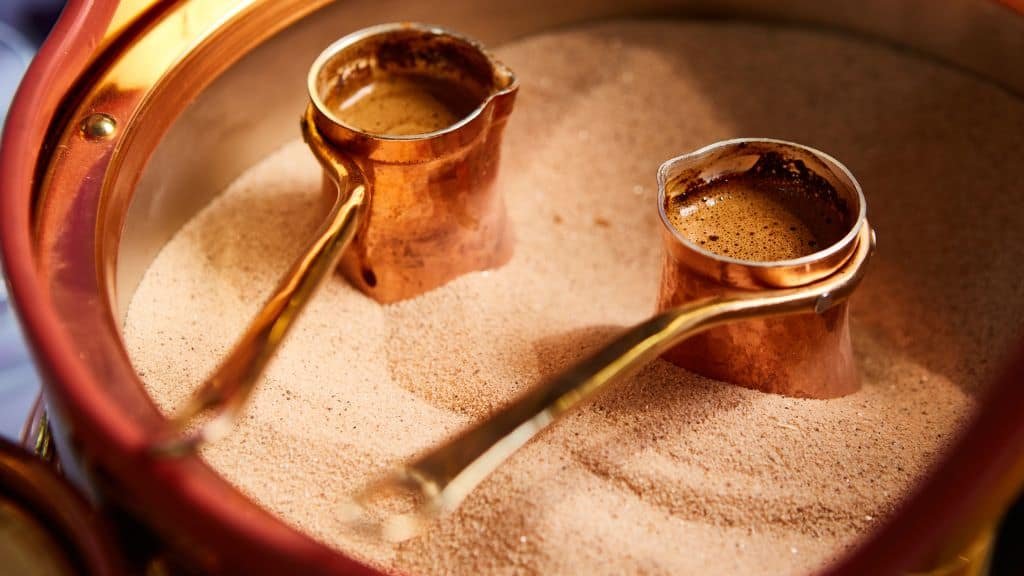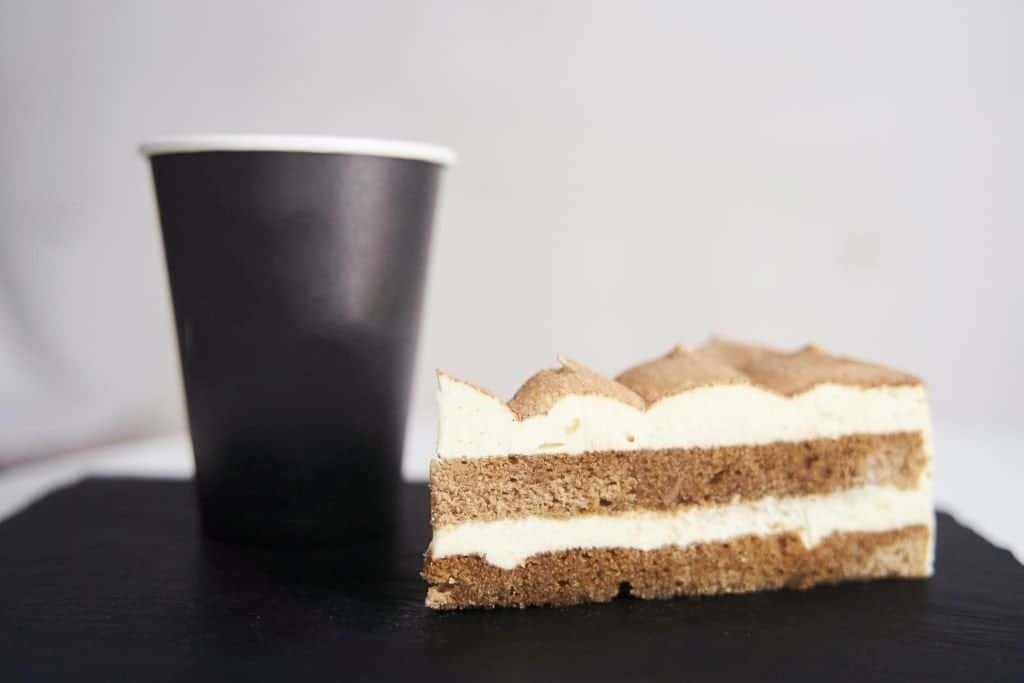If you’re a fan of Turkish coffee, you may have noticed that sometimes it doesn’t foam as much as it should. This can be frustrating, especially if you’re used to the thick, creamy layer of foam that is characteristic of Turkish coffee. There are several reasons why your Turkish coffee may not be foaming properly, and in this article, we’ll explore some of the most common causes and what you can do to fix them.
One of the most common reasons why Turkish coffee doesn’t foam is because the coffee isn’t fresh. If your coffee beans are stale or have been sitting around for too long, they won’t produce the same level of foam as fresh beans. Another common cause is boiling the water too much or too little. If the water is not hot enough, it won’t create the necessary pressure to foam the coffee, while boiling the water too much can cause the coffee to burn and lose its foaminess. Additionally, the coffee-to-water ratio can also impact the foaminess of your Turkish coffee. Using too much or too little coffee can result in a weak or foamless cup.
In this article, we’ll take a closer look at each of these factors and provide tips on how to ensure your Turkish coffee is always perfectly foamy. Whether you’re a seasoned Turkish coffee drinker or a newcomer to this delicious beverage, understanding why your coffee isn’t foaming properly can help you make the perfect cup every time. So, let’s dive in and explore the world of Turkish coffee!
Why Turkish Coffee is Not Foaming

The Role of Foam in Turkish Coffee
Foam is an essential part of Turkish coffee. It is the thick, frothy layer that forms on top of the coffee when it is brewed. The foam is not just for aesthetics; it has an important role in the taste and aroma of the coffee. The foam traps the aroma of the coffee and releases it gradually, enhancing the drinking experience. It also helps to keep the coffee warm for a longer time.
Factors That Affect Foam Formation
Several factors can affect the formation of foam in Turkish coffee. Understanding these factors can help you troubleshoot if your coffee is not foaming as it should.
The freshness of Coffee Beans
The freshness of coffee beans is critical to the formation of foam in Turkish coffee. Old beans lose their oils and flavors, which are essential for the formation of foam. Therefore, make sure to use freshly roasted and ground coffee beans.
Water Temperature
Water temperature is crucial for the formation of foam in Turkish coffee. If the water is too hot, it will scorch the coffee, and if it is not hot enough, the coffee will not brew properly. The ideal temperature for brewing Turkish coffee is between 158°F and 167°F (70°C and 75°C).
Coffee-to-Water Ratio
The coffee-to-water ratio is another important factor that affects the formation of foam in Turkish coffee. If the ratio is too high, the coffee will be too strong and bitter, and if it is too low, the coffee will be weak and watery. The recommended ratio for Turkish coffee is one tablespoon of coffee for every three ounces of water.
Fineness of Coffee Grind
The fineness of the coffee grind is also crucial for the formation of foam in Turkish coffee. If the coffee is ground too coarsely, it will not release the oils and flavors necessary for the formation of foam. On the other hand, if the coffee is ground too finely, it will clog the filter and prevent the coffee from brewing properly. The ideal grind for Turkish coffee is a fine powder, similar to powdered sugar.
Quality of Water
The quality of water used for brewing Turkish coffee also affects the formation of foam. Hard water or water with a high mineral content can interfere with the brewing process and prevent the formation of foam. Therefore, it is recommended to use filtered or bottled water for brewing Turkish coffee.
In conclusion, several factors can affect the formation of foam in Turkish coffee. By understanding these factors and following the recommended guidelines, you can ensure that your Turkish coffee is foaming as it should.
How to Make Turkish Coffee Without Foam
Step-by-Step Guide to Making Turkish Coffee Without Foam
- Start by heating the water in a cezve or small pot until it is hot but not boiling.
- Add the desired amount of coffee to the hot water and stir gently.
- Add sugar to taste and stir again.
- Place the pot over medium-low heat, and do not stir anymore. The coffee will start to bubble at the edges and rise up.
- Lower the heat to a minimum and keep a watchful eye for like 30 seconds, do not let it boil.
- Remove the pot from the heat and let it sit for a few seconds to allow the coffee grounds to settle to the bottom of the pot.
- Pour the coffee into a cup, leaving the grounds at the bottom of the pot.
Tips for Making Turkish Coffee Without Foam
- Use fresh coffee beans and grind them finely.
- Use cold water to rinse the cezve or pot before heating the water.
- Do not stir the coffee once it starts to bubble, as this can cause the foam to dissipate.
- Use a lower coffee-to-water ratio to reduce the likelihood of foaming.
- Experiment with different brewing processes and recipes to find what works best for you.
- Enjoy your Turkish coffee traditionally, without milk or cream.
By following these simple steps and tips, you can make delicious Turkish coffee without foam. Remember to be patient and enjoy the process, as this is a traditional and cherished way of brewing coffee.
What to Do When Turkish Coffee Doesn’t Foam
If you’ve ever made Turkish coffee, you know that the foam, or “kaimaki,” is an essential part of the experience. But what do you do when your Turkish coffee doesn’t foam? Don’t worry; we’ve got you covered. Here are some troubleshooting tips for Turkish coffee that doesn’t foam.
Troubleshooting Tips for Turkish Coffee That Doesn’t Foam
Check Your Water
One of the most common reasons Turkish coffee doesn’t foam is that the water is not hot enough. Make sure you are using boiling water, and that you are not using too much water for the amount of coffee you are using. The ideal ratio is one teaspoon of coffee for every 3 ounces of water.
Use Fresh Coffee
Another reason your Turkish coffee may not be foaming is that the coffee is stale. Make sure you are using fresh coffee beans that have been ground just before brewing. Stale coffee can also affect the taste of your coffee, so it’s important to use fresh beans.
Use Unfiltered Coffee
If you are using filtered coffee, you may not get the foam you are looking for. Turkish coffee is traditionally made with unfiltered coffee, which allows the coffee oils to mix with the water and create a creamy texture. If you are using filtered coffee, try switching to unfiltered coffee and see if that makes a difference.
Check Your Coffee-to-Water Ratio
The amount of coffee you use can also affect the foam. If you are using too little coffee, you may not get the foam you are looking for. Make sure you are using the right amount of coffee for the amount of water you are using. If you are unsure, try experimenting with different ratios until you find the right one.
Use the Right Type of Coffee
Not all coffee is created equal, and some types of coffee are better suited for Turkish coffee than others. Look for coffee that is specifically labeled as Turkish coffee, or look for coffee that is finely ground and has a strong flavor.

Don’t Boil Your Coffee
Finally, make sure you are not boiling your coffee. Boiling the coffee can cause it to lose its flavor and aroma, and it can also affect the foam. Instead, let the coffee come to a simmer, and then remove it from the heat and let it sit for a few minutes before serving.
By following these troubleshooting tips, you should be able to get the foam you are looking for in your Turkish coffee. Remember, it may take a bit of trial and error to find the right combination of coffee, water, and technique, but the end result will be worth it.
Alternatives to Turkish Coffee
If you’re looking for an alternative to Turkish coffee, there are a few options that you can consider. Here are two popular alternatives:
French Press
A French press is a popular alternative to Turkish coffee. It’s a simple and easy way to make coffee, and it produces a rich and flavorful cup. Here’s how to make coffee with a French press:
- Grind your coffee beans to a medium-coarse consistency.
- Add the desired amount of coffee grounds to the French press.
- Heat water in a kettle until it reaches 200°F.
- Pour the hot water over the coffee grounds in the French press.
- Let the coffee steep for 3-4 minutes.
- Press the plunger down slowly to separate the coffee from the ground.
- Pour the coffee into your favorite mug and enjoy!
Pour Over
Another alternative to Turkish coffee is the pour-over method. This method produces a clean and smooth cup of coffee. Here’s how to make coffee with a pour-over:
- Grind your coffee beans to a fine powder.
- Place a filter in the pour-over cone.
- Add the coffee grounds to the filter.
- Heat water in a saucepan until it’s just about to boil.
- Slowly pour the hot water over the coffee grounds in the filter.
- Let the coffee drip through the filter into your cup.
Both of these methods produce a delicious cup of coffee, and they’re easy to do at home. So if you’re looking for an alternative to Turkish coffee, give these methods a try.
Wrapping Things Up
So, there you have it. If your Turkish coffee is not foaming, there are a few possible culprits to consider. Here’s a quick summary of what we’ve covered:
- The coffee may not be fresh.
- The water may have been brought to a boil.
- The beans may be ground too coarsely.
- The coffee-to-water ratio may be too high.
- Sugar may have been added before brewing, which can decrease the quality of foam.
To ensure that your Turkish coffee foams properly, make sure to use fresh coffee beans, grind them to a fine consistency, and use the correct coffee-to-water ratio. Avoid adding sugar before brewing, and be careful not to bring the water to a boil.
Remember that making Turkish coffee is an art form that takes practice to perfect. Don’t get discouraged if your first few attempts don’t turn out perfectly. Keep experimenting with different methods until you find the one that works best for you.
With these tips in mind, you should be well on your way to enjoying a delicious cup of foamy Turkish coffee in no time. Happy brewing!




